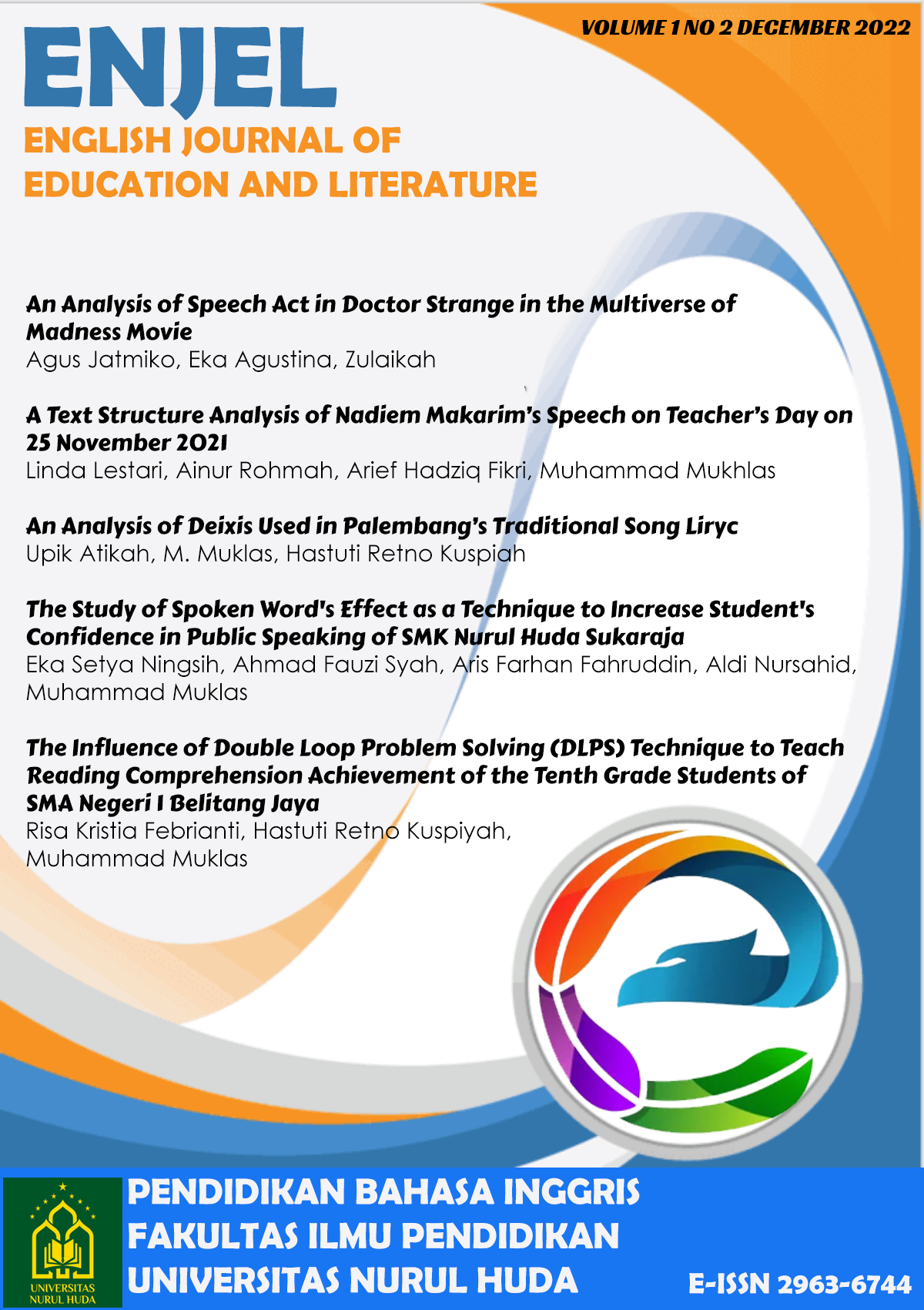An Analysis of Deixis Used in Palembang's Traditional Song Liryc
Deixis
DOI:
https://doi.org/10.30599/enjel.v1i02.365Keywords:
Palembang's Traditional Song Liryc, DeixisAbstract
The thesis entitled “An Analysis of Deixis Used In Palembang’s Traditional Song Liryc”. The objective of this study was to identify the types of deixis used in Palembang’s traditional song liryc and to find out the dominant types of deixis used in Palembang’s traditional song liryc. In this study, the writer used descriptive qualitative method, because the data in this research are liryc of the song. The object of the study is Palembang’s traditional song liryc that consist of five song liryc, they are Gending Sriwijaya, Dek Sangke, Palembang Darussalam, Cuk Mak Ilang, and Bumi OKU Timur. The data was analysis through several steps including determained and classified word deixis expresssions, and then analyzes the types of deixis, and the last the researcher calculated the types of deixis used in each song liryc. Based on the data finding, the researcher found that there are five types of deixis found in five of Palembang’s traditional song liryc, namely person deixis, place deixis, time deixis, discourse deixis, and social deixis with a frequency appearance 82 times. The types deixis that is often used in each song is person deixis with a percentage 41.5% with a frequency appearance 34 times. And the types of deixis that is rarely used is discourse dexis with percentage 4.9% with a frequency appearance 4 times. It can be concluded that the dominant types deixis are used in the Palembang’s traditional song liryc is persn deixis.







